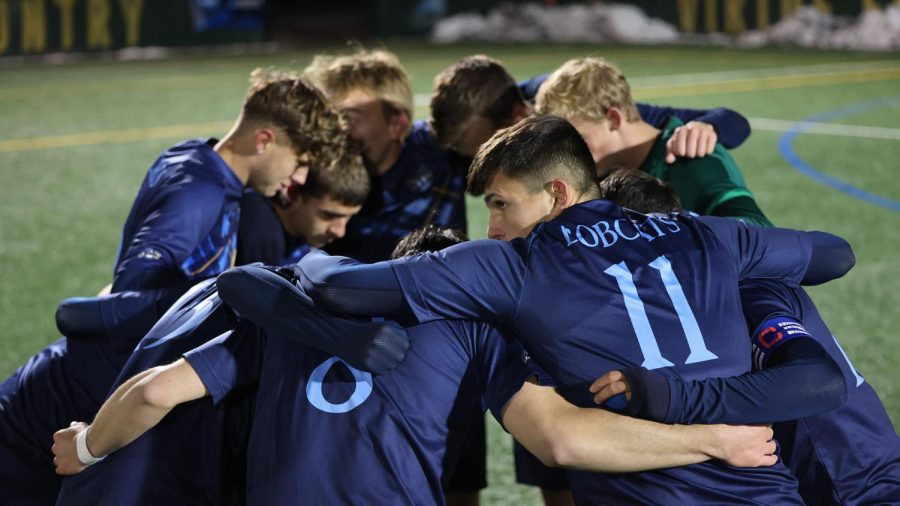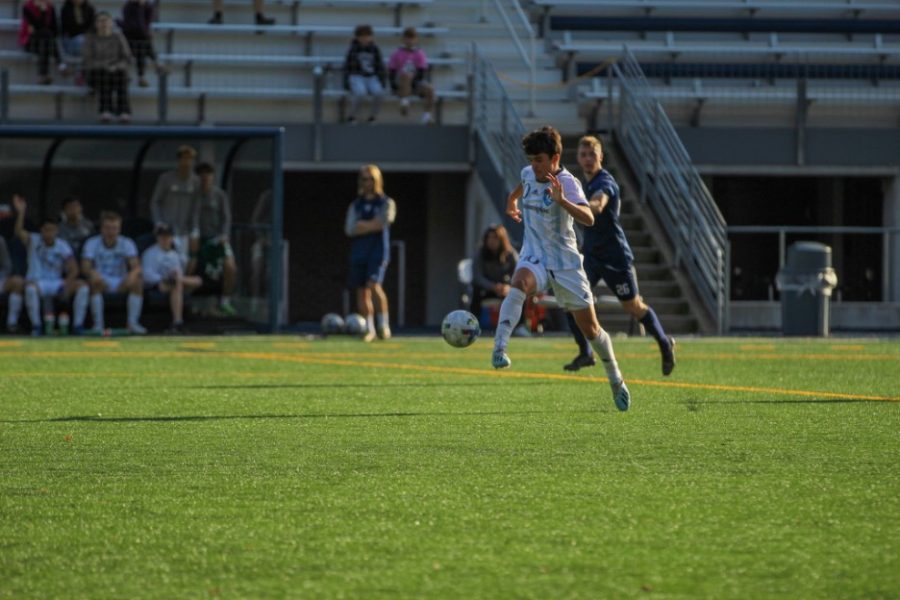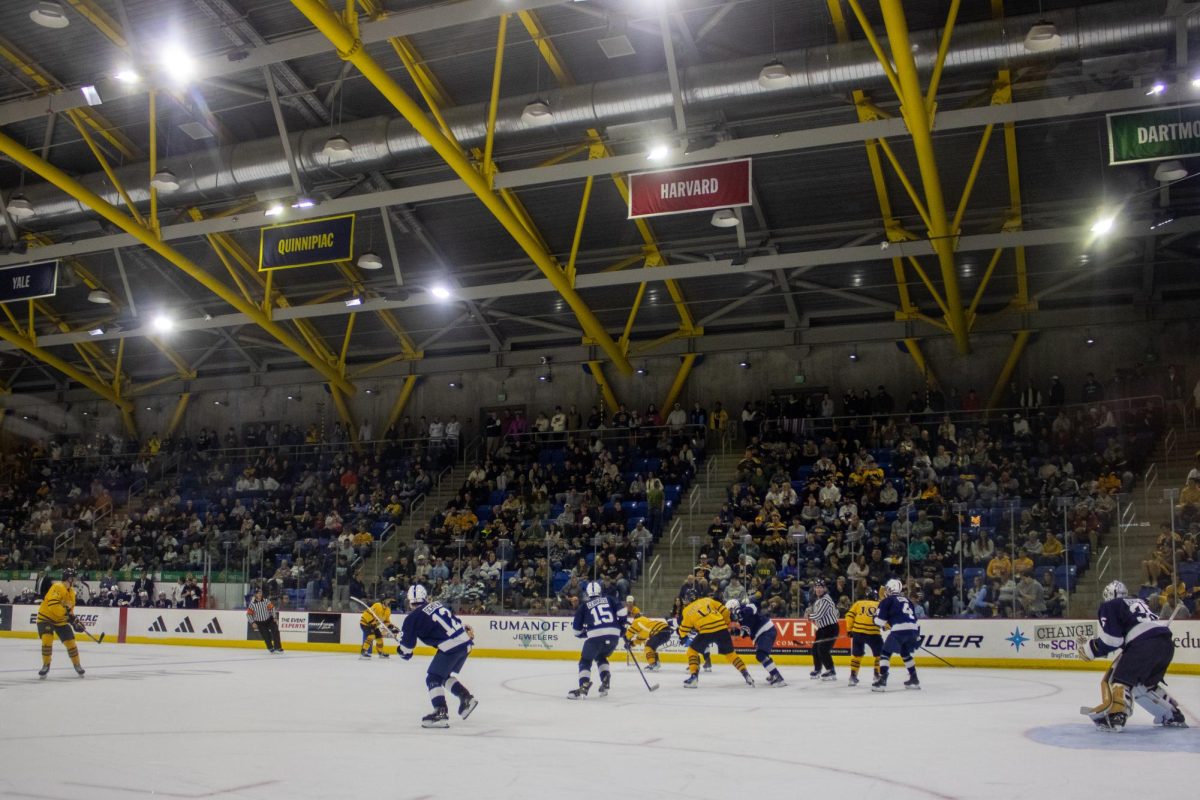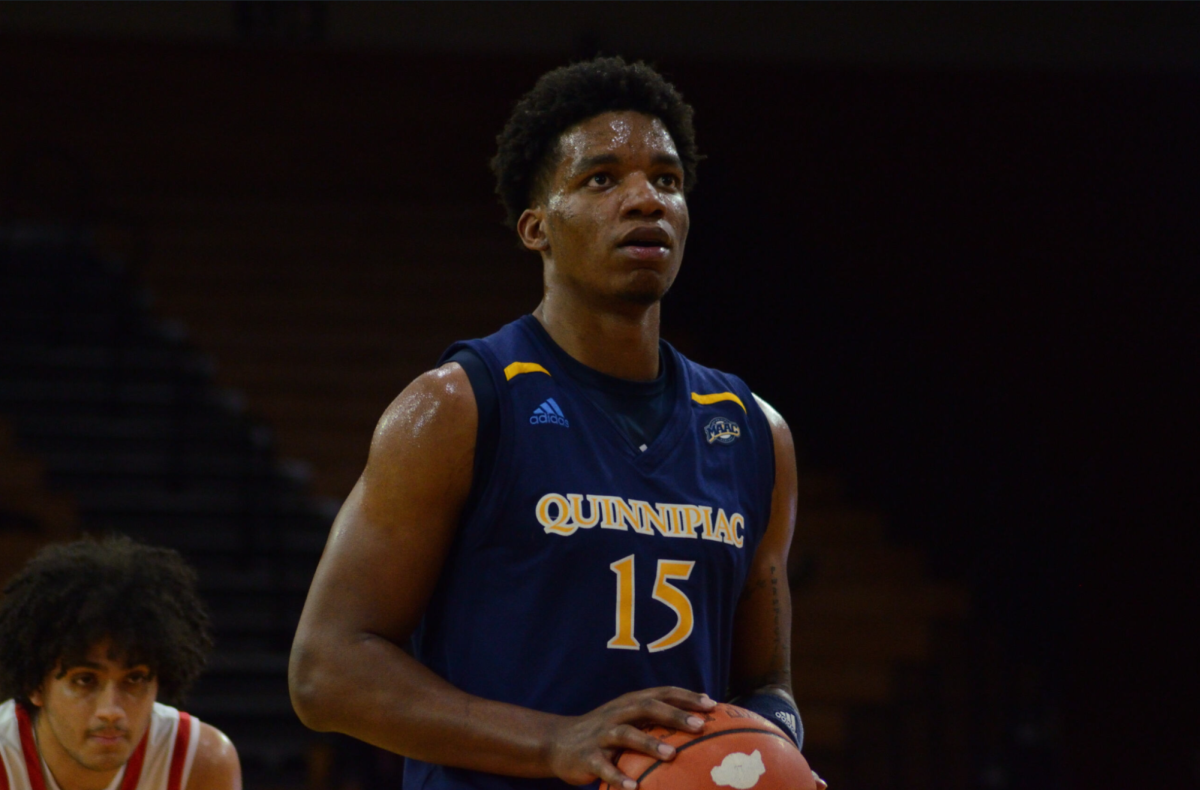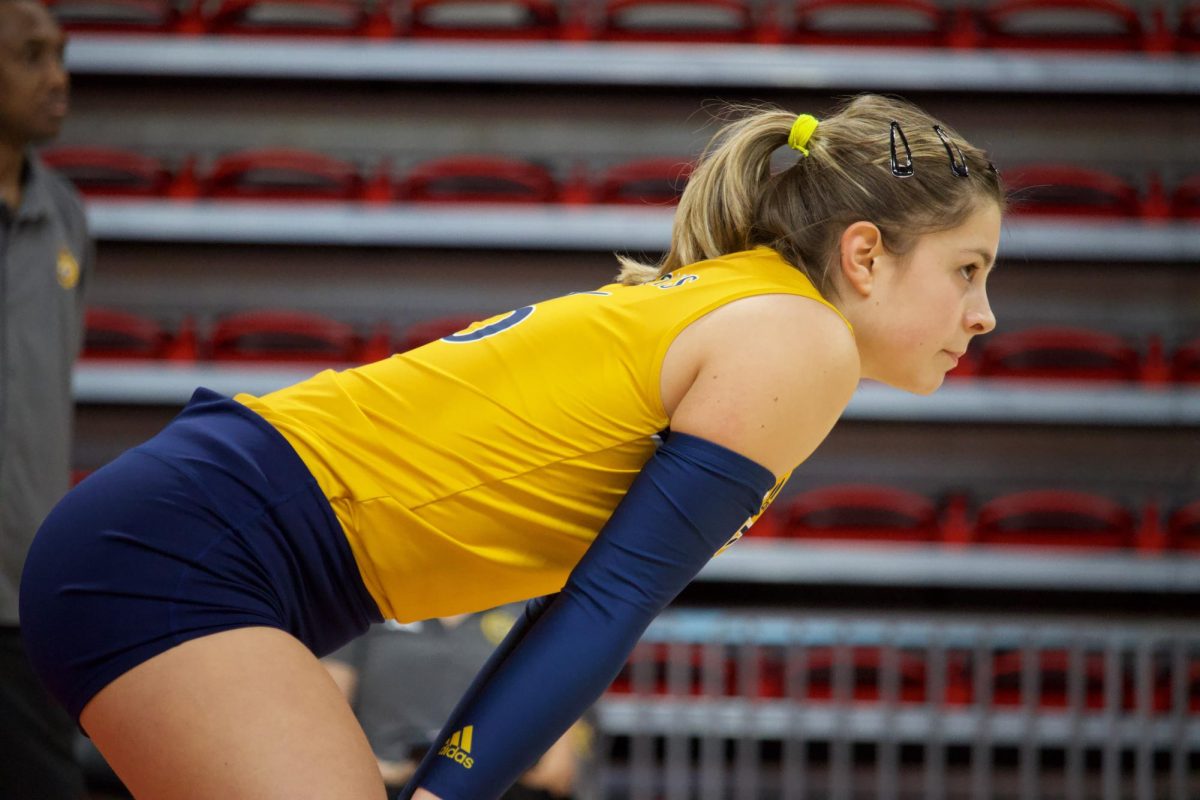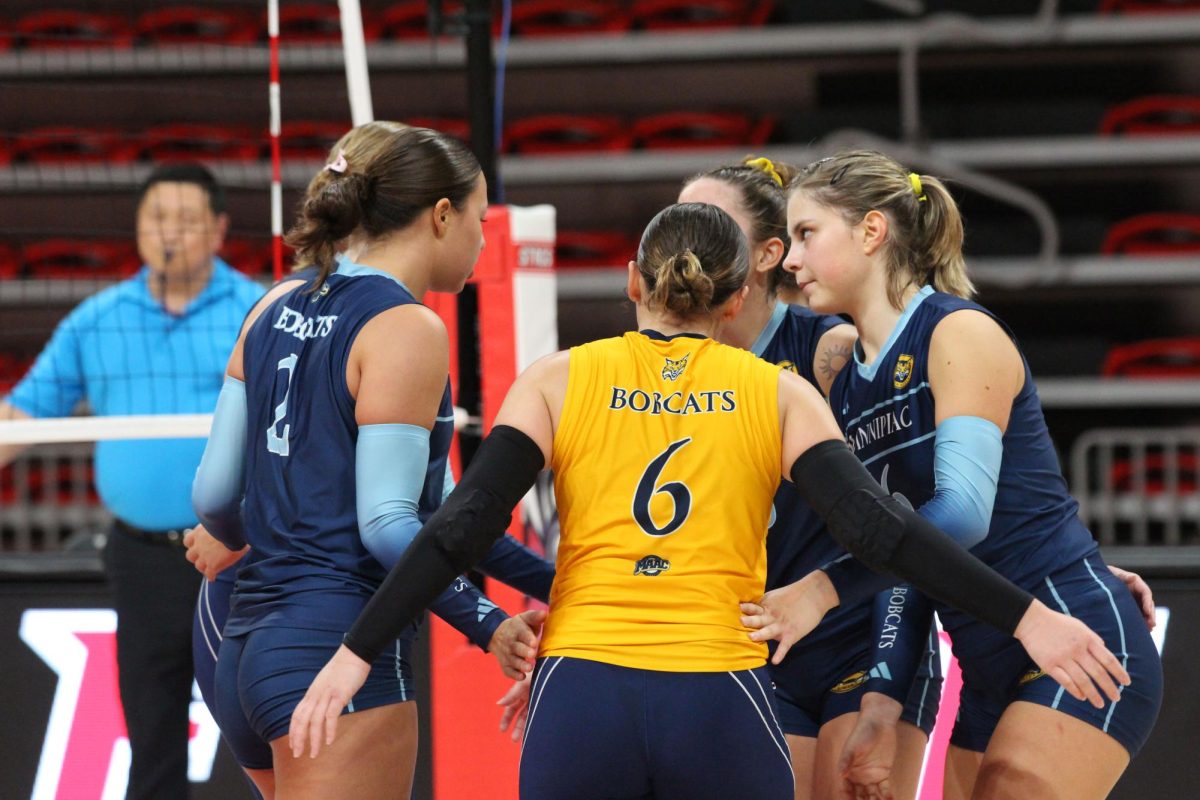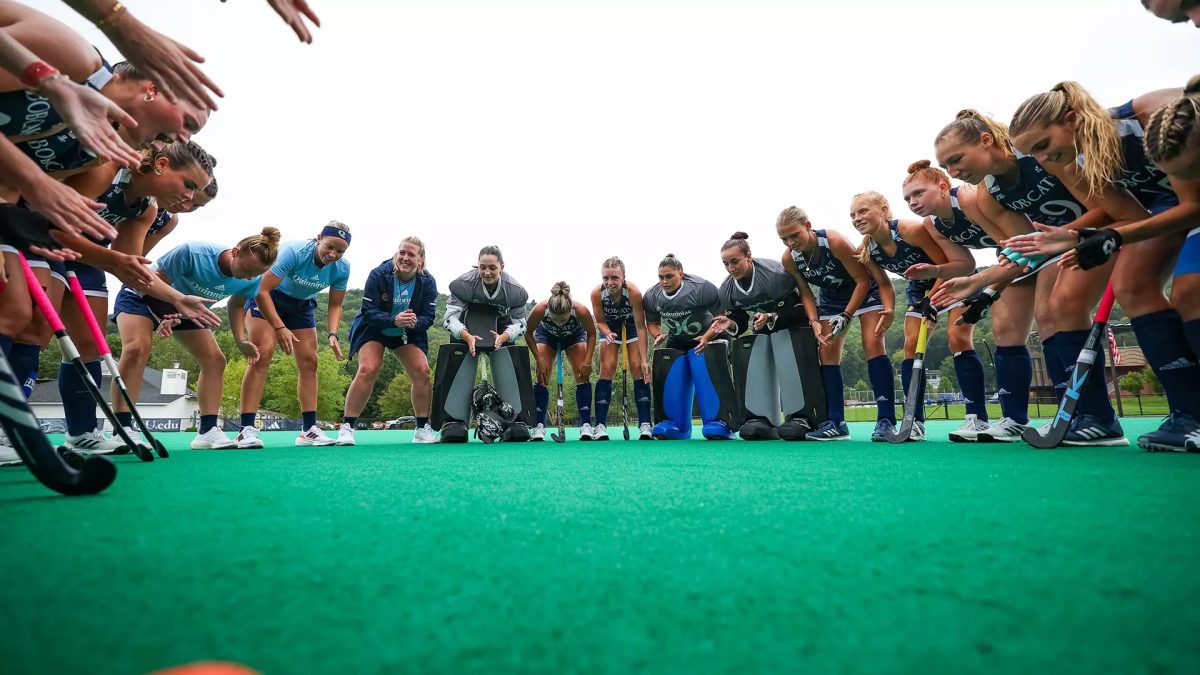Photo courtesy Quinnipiac Athletics
By: Victoria Rutigliano
Gone are the days of playing a sport and having your coach decide whether or not you had a good game. First came statistic tracking and basing your performance off of numbers, then came watching film of past game. While those methods are not obsolete, the Quinnipiac men’s soccer team is keeping tabs on its players performances in a brand new way – a performance tracking system.
The performance tracking system, known as Playertek, is a GPS system that calculates anything from how many miles the players run each game, how often they’re sprinting, their impacts, and where they are on the field each game.
All the information comes from a pod nestled in a vest the players wear under their shirts during games and practices, which after a match they can plug in to the computer and see exactly how much they exerted themselves each game.
This system, according to head coach Eric Da Costa, is helpful in keeping the players accountable.
“It makes them more involved in their own development,” Da Costa said. “It’s not just about sitting down with the coach and having a conversation about where the coach thinks you’re at. You have hard data, tangible evidence that you can sit down and look at that doesn’t lie.”
An average player runs around seven miles every game, and with the new system players can see what they need to improve on, whether it be where they are on the field or how many miles they ran compared to others in their position.
James Doig is one of the players on the team who’s noticed a difference after looking at his tracked information.
“Idleness is a big one,” Doig said. “We do a recover session so you know who are the players that have exerted and worked hard so therefore they get the day off. It’s not just because you’ve played 80 minutes because you’ve might have done nothing.”
From a coach’s point of view, this new system helps the coaches realize how much each player is really exerting himself in practice and games.
“It just makes us better coaches,” Da Costa said. “It keeps us more in tune with our players physically and hopefully in the long run we can find ways to keep players on the field and off the bench and in the training room because of injury.”
Another benefit, according to Da Costa, is having the information so readily at his fingertips. Instead of having to find time to watch film, the coaches can check online to get a look at the players positional awareness, the amount of ground they’re covering and if they’re in the right shape.
While Da Costa says the information is not a deciding factor on whether or not certain players will play, down the road it could help with player comparison.
“They’ll definitely in the long run use that to compete against each other,” Da Costa said. “Especially a midfielder saying hey I covered eight miles today you only covered six so he’s doing all the work for you.”
For sophomore Rashawn Dally, who said he usually runs between six and seven miles a game, the greatest benefit has been being able to compare himself game by game.
“Some games you play in you think you did a lot of running and then the next game you check and you did more,” Dally said. “So for me personally it just makes me know that I can always improve myself each game, each training session.”
Training sessions can now be tailored to what the coach notices from the data, whether it be lighter session after a heavy game, or a practice working on agility after noticing a decrease in the number of impacts the players are making.
The full system can cost anywhere between 10 and 15 thousand dollars, but the soccer team has a scaled down version – still costing the team $3,000. The team has 10 pods they rotate around and with the new system still in its infancy, Da Costa said the greatest benefit for the players will be keeping themselves personally responsible game in and game out.
“I think what it does is give them accountability. I think our guys really enjoy having that real time feedback coming back from them right away and then they can sit down and come in and have conversations with us and those conversations are always easier to have when you have tangible information in front of you.”




